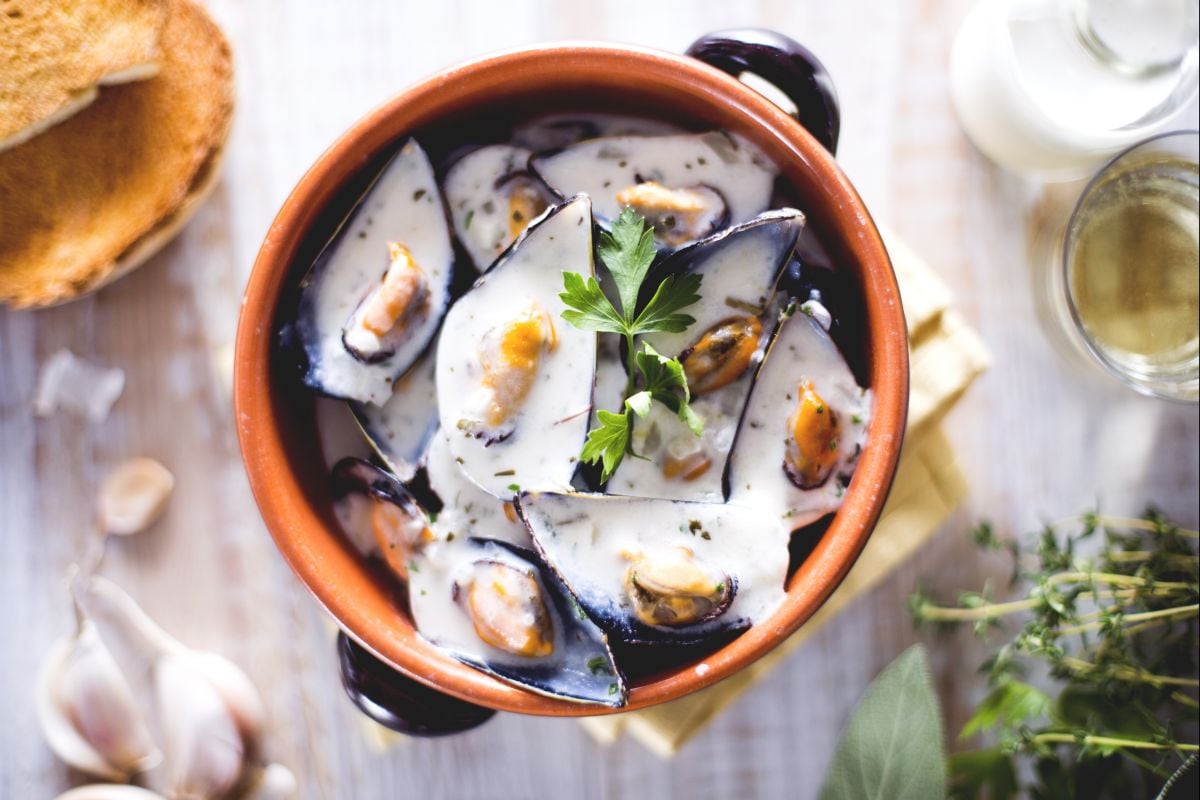Spaghetti with Catalan-style mussels
- Easy
- 60 min
- Kcal 143

There are many recipes for cooking mussels because this shellfish has such a delicate taste that it is extremely versatile. Some of the recipes featuring it are very simple and quick to prepare, like mussels with pepper, but there are also more elaborate and rich recipes, like the one we propose today: mussels in white wine and cream sauce. This recipe was a real discovery that delighted us with a new way of savoring this beloved shellfish. The sautéed onion and garlic made with butter combined with the aromatic flavor of white wine and the tangy lemon juice is made creamy by the cream: you will create a tasty and flavorful sauce that will leave your guests ecstatic! We dipped the mussels in this sauce to let them absorb all the flavor, for a dense and velvety result. We bet that in addition to eating the mussels, someone will even mop up the sauce with bread!

To prepare mussels in white wine and cream sauce, start with the aromatic herbs: rinse them well and dry them. Then remove the thyme and rosemary leaves from the stems 1 and chop them finely, along with the sage 2. Also, finely chop the parsley and set it aside 3.

Now peel and finely chop the onion 4. Move on to the untreated lemon: grate the zest and collect it in a small bowl 5. Squeeze it to obtain the juice 6: set aside the juice and zest.

At this point, focus on cleaning the mussels (for more details, consult our cooking school: How to clean mussels). Rinse the shellfish well under plenty of fresh running water 7 and remove the beard protruding from the mussel shells 8. With the help of a small knife, remove encrustations and barnacles from the shell and for better cleaning, scrub the shell with a steel wool pad to remove remaining impurities 9.

Now take a high-sided non-stick pot and melt 3 tablespoons of butter 10 over very low heat. When melted, add the garlic 11 and the onion 12.

When the garlic is golden, remove it 13. Deglaze with the white wine 14 and add the lemon juice 15.

Flavor with the lemon zest 16. Add the chopped sage, rosemary, and thyme 17, mixing the ingredients well. Finally, add the mussels 18.

Cover with a lid 19 and let them cook over low heat for 3-4 minutes. When the mussels have opened, use a slotted spoon to transfer them to a bowl 20 and open some of them 21, removing the shells.

Reduce the cooking liquid 22 and add the remaining 1 tablespoon of butter 23 to melt. Transfer a ladle of the cooking liquid to a large bowl where you will pour in the flour gradually, continuing to whisk with a hand whisk to create a homogeneous and smooth mixture 24.

Transfer it back to the pot while continuing to mix the ingredients to prevent lumps from forming 25: let it thicken over very low heat for 2-3 minutes. Then add the cream 26, continuing to whisk. Finally, pour the mussels back into the pot 27.

Mix them well with the cooking liquid 28 and let them absorb the flavor by heating over low heat for 3-4 minutes. Flavor with the chopped parsley 29, mixing it well with the other ingredients and turn off the heat. Finally, adjust the salt and pepper. Now plate the mussels in white wine and cream sauce and enjoy them while still hot 30!